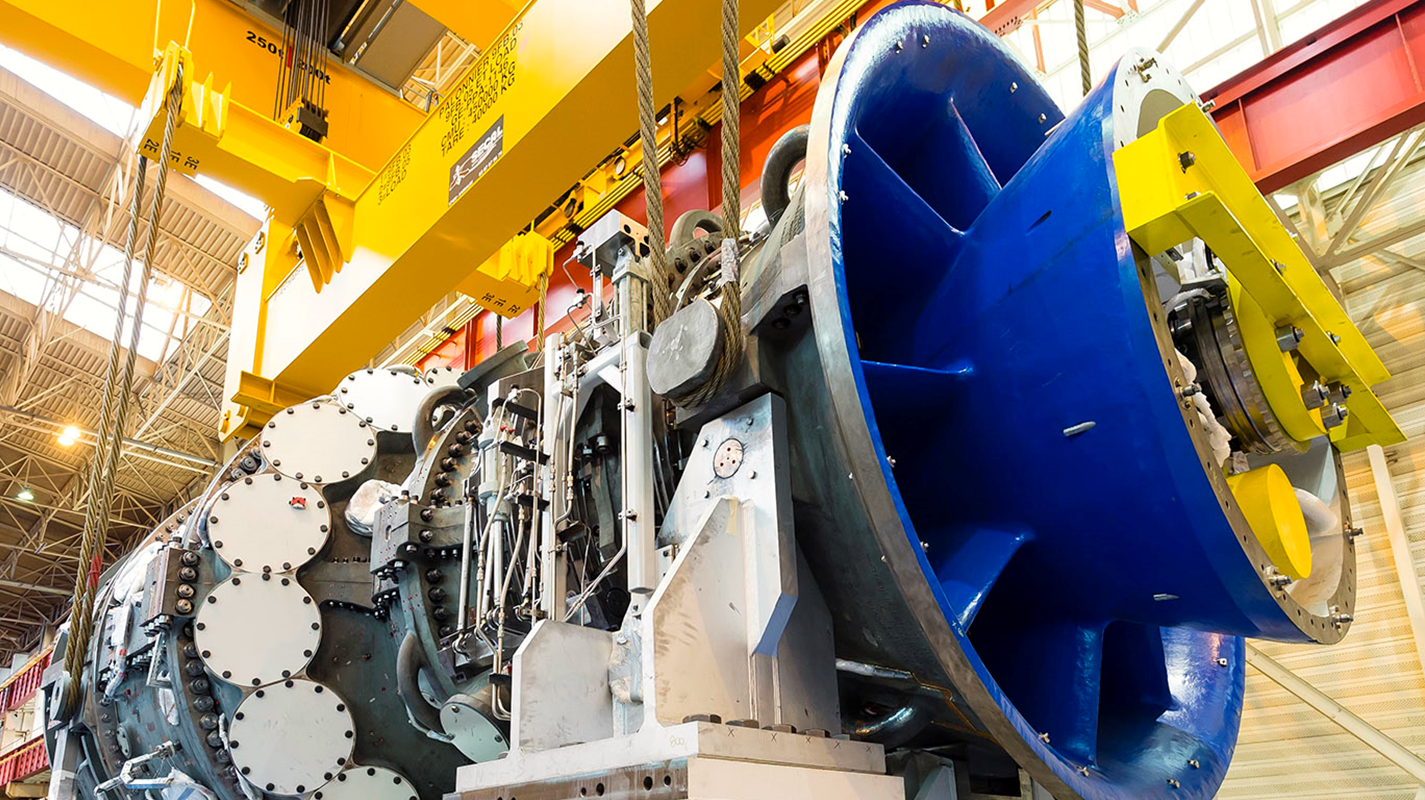JEA is moving forward with plans to build a $1.57 billion natural gas-fired power plant to replace an aging piece of its Northside Generation Station.
Board members for the Jacksonville utility voted unanimously Tuesday to allow JEA executives to negotiate an agreement with energy component supplier GE Vernova to reserve a 640-megawatt, combined-cycle turbine to power a new electricity generation facility at the former St. Johns River Power Park site in North Jacksonville by 2032.
JEA officials have put off plans to build a new generation station since 2012, when a new power plant was originally recommended to replace the aging oil and natural gas-burning Unit 3 at the Northside Generation Station.
The utility originally delayed it because of poor economic conditions at the time then again in 2019 when former JEA leadership tried to sell and privatize the utility, a scandal that resulted in a full leadership turnover.
In 2023, the recommendation for a new natural gas plant was included in JEA’s Integrated Resource Plan that, at the time, officials estimated would cost $825 million. That’s the same board-approved plan that calls for JEA to reduce its reliance on fossil fuels and aim for 35% of its energy portfolio to come from clean energy sources by 2030.
Members of the public and environmental activists addressed the board before the vote Tuesday, trying to persuade JEA leadership to delay its decision in favor of more renewable solar projects.
Board Chair Joe DiSalvo said JEA faces a projected 406-megawatt power deficit by the early 2040s from the scheduled shutdown of the Northside Unit 3 and expiration of the nuclear Plant Vogtle contract. Utility officials can’t wait any longer to act on a replacement, he said.
“We don’t have the luxury to defer this decision,” DiSalvo said. “Since 2006 we said (the) economic climate and environment wasn’t right, so let’s just wait and see if that settles down. We can’t kick the can down the road any more. That can is going to hit 2 inches away right now.”
The board chose to build its own plant instead of a section option to buy power through a 30-year agreement with Florida Power & Light Co. JEA officials said Tuesday, although the upfront capital costs would be more to build their own facility.
JEA says the state-of-the-art GE turbine will be more efficient and burn less natural gas fuel and have lower CO2 emissions than FPL’s energy generation, and generating the power locally will help mitigate outages from future storm activity in South Florida where the FPL power would be transmitted from.
The 48-year-old Northside generating unit has been costing JEA money. According to JEA Chief Financial Officer Ted Phillips, an unplanned outage last winter is largely responsible for a $3.37 million increase in JEA’s non-fuel purchase power budget when the utility had to buy power to make up for the loss.
JEA is currently planning for 1% growth per year in the amount of electricity it needs to produce to meet demand. The state Public Service Commission will also require all utilities to have an additional 15% of its total power output in a reserve by 2028, which leaders say is another reason to build the facility now.
The utility’s analysis shows that it will cost the utility $6.24 billion to build and operate its own natural gas plant over the next 30 years compared to $6.18 billion to buy that power from FPL.
JEA selected GE Vernova to supply the power plant turbine from a request for proposals it released in September 2024. The only other bidder was Mitsubishi of America.
A presentation prepared for Tuesday’s meeting says the GE turbine will produce 50% less carbon dioxide emissions, a key greenhouse gas effecting climate change, than a similar coal generating plan.
In the future, the turbine is also designed to use hydrogen as a fuel source that could power up to 50% of the turbine’s operations.
Ricky Erixton, JEA’s chief electric systems office, says hydrogen as a commercial grade fuel at this scale is not currently commercially viable, and may not be any time soon.
The JEA official said Tuesday that the federal government has reduced funding into hydrogen fuel research.
“So I don’t have an expectation right now when that will be,” Erixton said. “These turbines are world-wide turbines. These are not just built for use in North America. So there are other counties that are wanting different fuel sources as well. So I expect that as technology improves overseas, maybe other counties will have the technology research, but in the United States, I don’t see it moving forward for at least this (presidential) administration.”
The price tag for the project has gone up $745 million since JEA first priced the project in 2022. Joe Orfano, the utility’s chief financial officer, said that’s due to inflation affecting materials, fuel and labor costs.
Board documents show that JEA is also taking tariffs into account, which will be addressed in the reservation agreement with GE Vernova.
JEA Senior Vice President of Finance Julie Crawford said the increased cost for the plant “may put a little pressure on rates moving forward,” but she doesn’t expect a big effect. The utility put a rate increase in place in April with another planned to start in October.
Before JEA can break ground, officials still have to issue another request for proposals for the engineering and construction of the plant. The utility also will have to get approval to build it from the state.
The facility will take 40 to 50 employees to operate, according to JEA officials. Building at the 2,000-acre St. Johns River Power Park is also a departure from the utility’s previous plan to sell off some or all of the property for economic development opportunities.
Where’s the solar?
Board member John Baker conceded during Tuesday’s meeting that JEA has struggled getting more solar power on its grid. In its 2023 resource plan, JEA would need to increase its power production from solar and utility-grade battery storage by 1,300 megawatts by the end of the decade, according to Jacksonville Today news partner the Jacksonville Daily Record.
Erixton said Tuesday that those goals will be evaluated when the plan is updated in 2026.
The Trump administration’s Big Beautiful Bill Act recently passed by Congress says to receive clear energy investments and production tax credits for solar projects, they must commence construction by July 4, 2026, or be placed in service by Dec. 31, 2027.
Erixton and Orfano said those new regulations and tax credit changes are going to make it more expensive for utilities like JEA to build solar projects for the foreseeable future.
“We are committed to trying to get solar,” Baker said. “We are having deep difficulties making it happen and losing the tax deductions that were gotten is going to make solar harder.”
According to Erixton, the utility is continuing to invest in its solar farms on the Westside but had to cancel two projects in recent years due to rising costs.
Susannah Randolph, chapter director for Sierra Club Florida, made an economic case for not building the natural gas plant. She said the $1.57 billion cost does not include fuel, which can vary in certain market conditions. Club members pushed solar as a solution in their comments Tuesday.
She also argued that an expense this large could become a target of efforts by the Florida Department of Government Efficiency, or DOGE, to cut local governments’ budgets.
“This is an unnecessary expense given the more cost-effective options that are available to you, and given the focus by cutting costs by state government currently, this project is not only bad timing, it’s bad setup,” Randoph said.
In addition to asking for bids for the turbine, JEA also released what is called a market test solicitation, which invited any bidder to fill JEA’s electric capacity needs through any method. Although solar wasn’t directly referenced, officials said solar could have been pitched as a solution.
“We can continue to evaluate solar. We can continue to evaluate hydrogen, we can continue to evaluate the small nuclear plants that seem to have some promise,” Baker said. “And to the extent that they are move efficient and are more environmentally efficient, that’s a decision we can make later when we know what they’re talking about and we’re not gambling on a future technology that seems to have significant flaws right now.”







